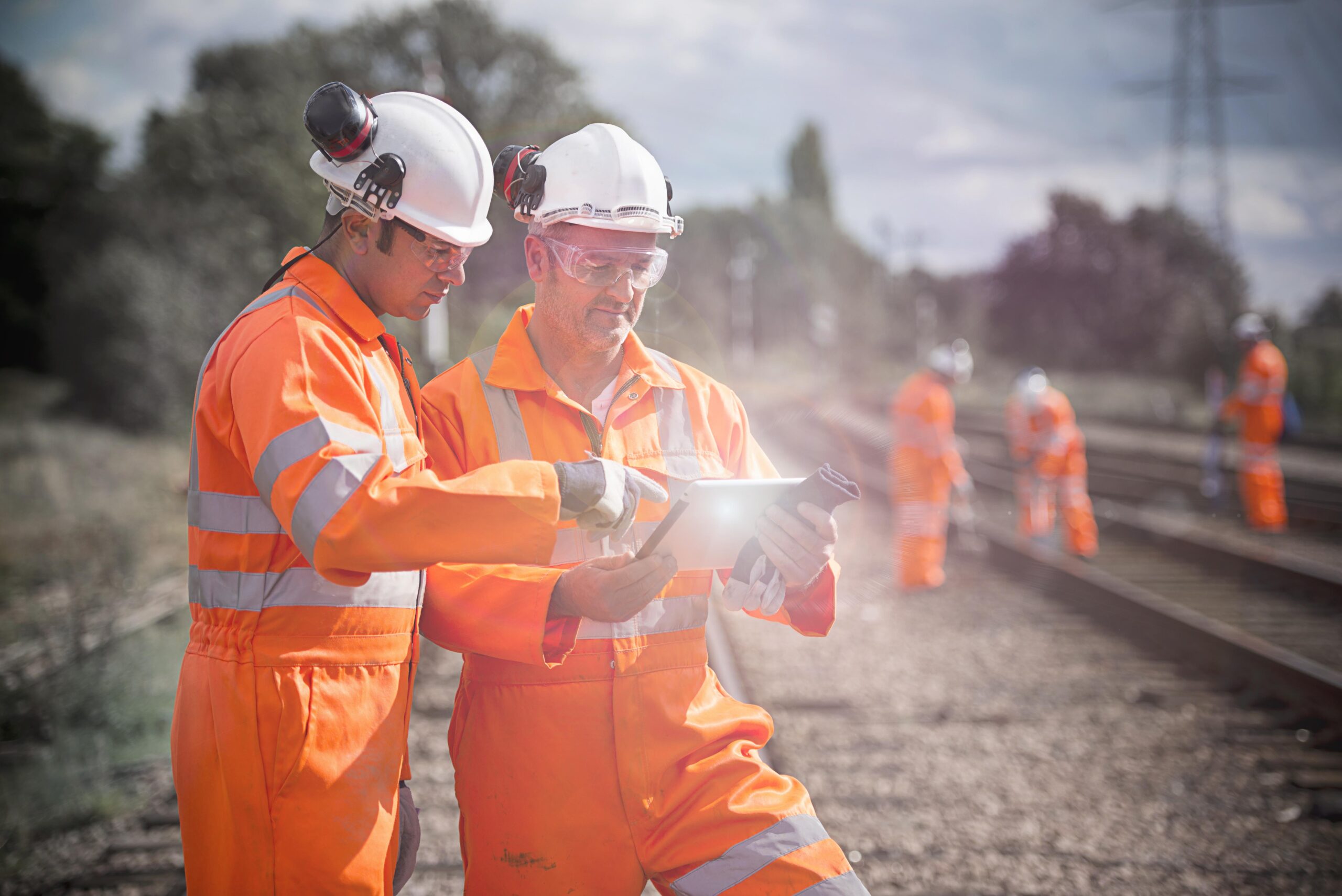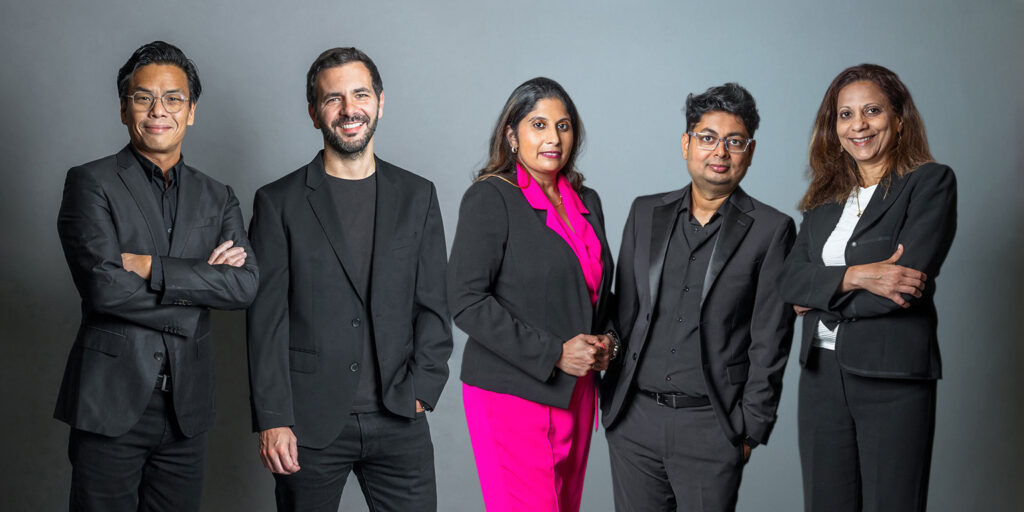Network Rail and EY team-up to deliver a comprehensive package of measures to improve safety, drive efficiencies and boost employee experience for rail workers.
Network Rail’s ‘Planning4Delivery’ programme has been voted Transformation Project of the Year 2022 by a panel of experts including industry heavyweights, independent analysts and senior media commentators. The project was delivered by EY along with a supporting cast which included Capgemini, Arup, Egis, Morson and technology partner, OnTrac.
The overarching objective was to improve safety for 22,000 Network Rail workers by digitising the scheduling, approving and monitoring of remedial and planned maintenance work across Network Rail’s infrastructure. The project was centred on the implementation of RailHub, a comprehensive industry solution developed by OnTrac that provides a cloud-based digital platform with baked-in compliance as standard. OnTrac delivers digital Safe Work Packs for planners and responsible managers, an extensive risk database, workflow management tools that are aligned to industry standards, and real-time data and analytics that reduce errors and significantly increase operational efficiency and safety.
Background
There are many reasons an organisation embarks on a digital transformation journey but few projects, if any, will have a benefits case as compelling as Network Rail’s. Since 2008, 33 employees and contractors have lost their lives working on rail infrastructure. The 2019 fatalities at Margam, where three workers were killed, represented a tragic and seminal moment that became the catalyst for a concerted effort between all stakeholders to digitise safety protocols for all rail workers.
The Rail Accident Investigation Branch identified a number of causes behind near-misses, accidents and fatalities – from the way the safe work system was planned and authorised to a lack of effective challenges among colleagues when the safe system deteriorated on work sites.
Twice, Network Rail had launched a programme designed to address these problems. Both times, the programme failed leaving employees sceptical that the organisation could deliver a coherent safety strategy. At the third time of asking, Network Rail, EY and its partners successfully developed and launched RailHub, a solution that has radically transformed the way Network Rail manages safety on its rail network.
The partnership
Network Rail partnered with EY to devise an implementation strategy that was focussed on education, change management and user adoption with the clear objective to win over the hearts and minds of both rail workers and the unions. At face value the proposition was simple: adopt new processes and everyone goes home safe. However, the transformation being proposed would radically change working practices that had been ingrained over decades and the challenge facing the implementation team was considerable.
The project was particularly demanding due to the complexion of Network Rail’s workforce which was predominantly from a demographic resistant to change and stuck in an established pattern of work and behaviour. The programme required significant change management expertise to bring a traditional workforce out of a paper-based environment and into a digital domain. As Dylan Edwards, senior project manager at Network Rail, told me, “Many of our people have worked on the lines for decades and it was a huge challenge to convince them to use digital technologies, especially when previous efforts had failed.”
The EY team adopted its ‘Transformation Realised’ approach with some nuanced elements that were geared specifically for Network Rail. The client facing team was carefully selected to make end-users feel comfortable. Sharp suits were replaced by casual clothes at workshops and training sessions. And the team included a diverse mix of people and opinions that ultimately led to a collaboration between all stakeholders centred around one common objective.
Jamie Crystal was the EY partner leading the project and he told me: “I am exceedingly proud of the work we have delivered alongside Network Rail on the Planning4Delivery programme, resulting in the delivery of a suite of people, process, data and technology enhancements that are making a hugely positive impact on safe working practices on, or near, the UK’s rail network. As the prime contracting entity, EY was accountable for the end-to-end delivery, bringing together a broad team across EY and five ecosystem suppliers to deliver the full range of activities associated with this highly complex transformation programme. This included persona development and technology integration through to all aspects of business change.”
“The project delivered a suite of people, process, data and technology enhancements that are making a hugely positive impact on safe working practices on, or near, the UK’s rail network.” Jamie Crystal
Chris Johnson, managing director at OnTrac, added: “We were fortunate to work as part of a fantastic delivery ecosystem. From the start, there was a shared willingness to create the right conditions for the project to succeed. The team collectively understood the project vision and objectives, which inspired everyone from day one. Given the mix of colleagues and organisations involved, this was especially important. Our diverse knowledge, skills, views, and perspectives created a positive environment that ultimately produced a high-performing team.”
“Many of our people have worked on the lines for decades and it was a huge challenge to convince them to use digital technologies, especially when previous efforts had failed.”
Dylan Edwards
The solution
RailHub is a modular cloud-based suite of applications that is used by the rail, transport, logistics and supply chain industries to improve safety and efficiency across the full value-chain. It is extensively used in the rail industry by more than 350 companies to de-risk and optimise virtually every aspect of rail infrastructure management and has been adopted by Network Rail to address its archaic scheduling and safety procedures.
Historically, Safe Work Packs were printed bundles of instructions and protocols that all workers were required to collect and read before starting work. Often this involved travelling to a central office to collect the packs before heading to the work site and, as you would expect with a paper system, there was no way for managers to know whether they had been read or not.
The new digital packs not only delivered an immediate £15m per year cost saving by reducing the print burden, they also reduced employee travel time, saved travel costs and delivered a significant environmental benefit. In addition, managers were able to monitor how the packs were being used and step in with additional support for workers that needed it. Workers are now able to arrive on site and receive up to date and accurate method statements, safety protocols and instructions directly to a digital device – which can be read on or off-line – meaning every job is accurately planned and executed.
Edwards from Network Rail told me: “Whether you look at this from a sustainability point of view because we are cutting down less trees and saving on storage space; reducing worker fatigue because they can go straight to site and have all the information they need in one place; or the reduction in fuel bills and travel time – the trickle down benefits on top of the safety benefits are huge.”
At a stroke, Network Rail was able to dramatically improve compliance, ensure standards were being maintained and use data for continuous improvement of the employee experience and education process whilst realising a host of supplemental benefits which were aligned to Network Rail’s broader ambitions.
In addition, the solution and project highlights include:
- Developing and integrating a modern cloud-based technology platform into a legacy environment with poor data quality constraints
- Delivering a safety-critical system and obtaining the necessary approvals
- Cutting over to RailHub without interrupting the safe operation of the railway
- Preparing a sceptical end-user community for significant change
- Completing a successful consultation with local and national trade unions
- Reduction in near misses, accidents and incidents
- Optimised possession and line blockage planning, based on shared visibility of track access
- Increased compliance to the 019 Safety Standard
RailHub also gives Network Rail a platform on which to introduce complementary technologies to continue to improve safety, unlock new insights and increase productivity. The RailHub solution is both highly resilient and easily configurable. It is not only fit for purpose today, but also allows Network Rail to enhance and expand the platform long into the future.
Johnson from OnTrac told me: “The industry will soon see the transition from Network Rail to Great British Railways. It is important that RailHub continues to meet the industry’s needs today, whilst also ensuring that high safety standards are maintained and built upon throughout this period of change. One of RailHub’s great successes is that it ingests data from a significant number of Network Rail source data systems. This has the benefit of unlocking tremendous value from data that was previously siloed and underutilised. By presenting this data to users in a way that is useable, Network Rail is seeing tremendous value creation and new insights whilst also identifying where data can be cleansed and improved moving forward.”
Enhancements and future benefits
The core elements of RailHub have been successfully rolled out and Network Rail workers are already seeing significant benefits. A user feedback loop is helping Network Rail and EY refine the solution as more user data becomes available and further enhancements to the solution are already being scoped which will accelerate compliance and safety standards.
Johnson continued by telling me: “We are seeing excellent user feedback whilst they familiarise themselves with the new system. As part of this process, we are collecting suggestions for new features. It is important that user satisfaction is high, whilst ensuring work is planned more safely and efficiently. These suggestions are reviewed for suitability and scheduled into regular enhancement drops.
“One major enhancement currently ongoing is adapting the system to meet changes to Network Rail’s Standard 019, which aims to maximise the safety of work planned on or near the line. RailHub will play a key role in ensuring those benefits are achieved, whilst providing key management insights and reports. Reducing the risk of injuries and near misses is essential to supporting Network Rail’s safety vision ‘Everyone home safe every day’.”
“We were fortunate to work as part of a fantastic delivery ecosystem. From the start, there was a shared willingness to create the right conditions for the project to succeed.”
Chris Johnson

What makes this project special?
Network Rail was voted Transformation Project of the Year 2022 for a collection of compelling reasons. Not only did the project succeed in exceptionally challenging circumstances. It also demonstrated the holy grail for all technology investments – a straight line to meaningful benefits.
On one hand, this is not a direct comparison with a global SAP rollout or a complex finance transformation across multiple jurisdictions. But that doesn’t diminish its merit in the least. All transformation projects, no matter what the technology or environment, must illustrate certain characteristics in order to be considered successful – simply implementing software and turning the lights on does not constitute success.
For a project to stand out it must exhibit creativity, innovation and a uniqueness that sets it apart from others. The judges at this year’s ERP Today Awards considered 67 projects from a diverse pool of contenders and it was universally agreed that the approach and strategy applied to this project set a new bar in terms of vision and execution.
EY, one of the world’s biggest consulting firms, may not strike you as an obvious bedfellow for a project that required such a differentiated approach. The firm had to meet its customer at the point of need in an environment where shirts and ties were replaced by hard hats and bright orange jumpsuits. The technical solution was complex but much of that was abstracted away in favour of a people-first approach that put education, training and support at the top of page one. There was a sense of shared responsibility that cut across the entire project team and EY delivered a programme that will have lasting benefits with a genuine human story at the heart of their endeavours.
As Edwards from Network Rail concluded: “Without them we wouldn’t have succeeded. As a supplier and partner, EY was fully immersed in the challenge and they got to grips with the issues very quickly. We knew it was going to be a tough challenge but EY delivered and now the rail network is safer and our people get to come home every day.”
Congratulations to Network Rail, EY and the other partners.








